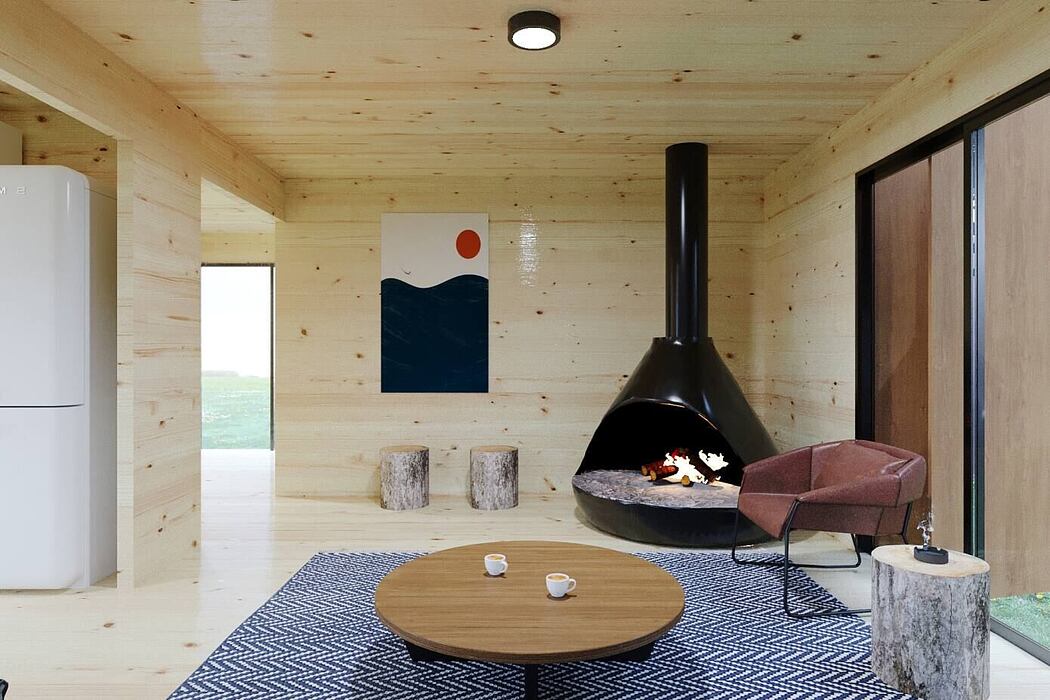This minimalist refuge designed by Doblle Arquitetura will be situated in Porto Alegre, Brazil.








Description
The project was conceived as a study of different alternatives for a refuge residence that at the same time can be replicated in different situations, such as countryside, beach or even in the same urbanized centers. Hence the proposal to make a modular structure in which it is easy to assemble and standardized manufacture, seeking greater precision and generating less waste, this makes our proposal sustainable and less aggressive with the environment.
The aim of the project was to propose the primitive shape of the house: open to the landscape. The play of lights and shadows enriches the transformative perception of the house, as volumetry we have a subtle square box that does not interfere with nature and can also integrate with the different possibilities of location, it is supported by a light structure in CLT, with great openings of glass to the surroundings and with a closing of wooden panels that can be opened or closed depending on the privacy that the customer wants to obtain. The first volume (family audience) – the main volume from now on, constitutes an area 8 meters wide by 8 meters long, making a total of 64 square meters. Enabling activities that include, among others: cooking, working, eating or simply interacting with other people who inhabit the home. This space is characterized by being a simple volume, with integrated kitchen and living room.
This project was developed with the main objective of specifying a decent housing prototype, with architectural, aesthetic and functional qualities, to provide a model, with pleasant aesthetic qualities, with positive, sustainable and, moreover, economic social and cultural implications. Likewise, it aspires to explore the scope and possibilities, in architectural terms, that the typology of “minimum housing” provides – in this particular case.
Inside, we have cozy and integrated spaces, the structure of the apparent house predominating, since the effect of wood brings warmth to the environment and the large glass openings are contemporary for the style of the house, when the panels are closed, the privacy of the space internal generates security for residents in addition to protecting them from sunlight and when they are open it generates this connection between the house and the surroundings.
The CLT (Cross-Laminated Timber) technology consists of an industrialized, durable and sustainable system of solid panels of treated reforested wood. The system allows the choice and composition of the modules that best adapt to each new landscape and user, as well as offering the option to choose finishes and equipment.
The residence combines design concerns with internal comfort in order to minimize the impact on the environment. The project was developed in accordance with a comprehensive guide on best practices, involving the rational use of resources such as water and solar energy, harvesting and reusing rainwater, high-efficiency lighting, reducing the demand for drinking water using devices high efficiency toilets, rainwater reuse and management, among other measures.
The implantation of Telhado Verde helps to reduce heat gains from roofs and to retain rainwater runoff. By selecting external surfaces with high solar reflectance and green roofing, the heat island effect was reduced, achieving an excellent quality of the internal environment, implementing passive strategies to bring thermal and luminous comfort to users.
Visualizations by Doblle Arquitetura
from HomeAdore https://ift.tt/3jXK93k
Comments
Post a Comment